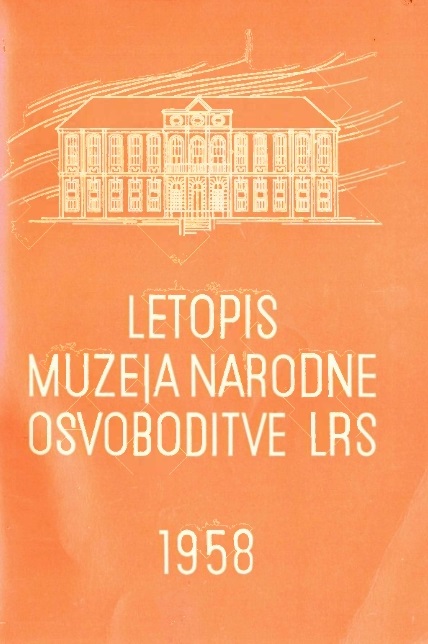Wehrmannschaft v boju proti narodnoosvobodilni vojski na Štajerskem
The German »Wehrmannschaft« and Their Struggle Against the Partisan Forces in Styria
Author(s): Tone FerencSubject(s): Military history, Political history, Government/Political systems, Politics and society, WW II and following years (1940 - 1949), Fascism, Nazism and WW II
Published by: Inštitut za novejšo zgodovino
Keywords: German occupation; German Reich; Slovenia; Styria; political history; National Liberation Struggle; Partisans; military history;
Summary/Abstract: After the occupation of Lower Styria in mid April 1941 the Germans established an organization similar to the National Socialist German Workers'Party, called »Steirischer Heimatbund« (Styrian Patriotic League), with the view of schooling the Lower Styrian population to their imminent annexation to the so-called Greater German Reich. After certain Nazi measures for the behoof of »the consolidation of Teutonism« in Lower Styria (deportation of »alien elements« and confinement of »dangerous persons«), and in view of the vigorous' Nazi demagogy, about 95 o/o of the population joined the Heimatbund. All the male inhabitants between their 18th and 45th year, accepted as members of the Heimatbund, belonged automatically to the Wehrmannschaft. The basic task of these troops was the same as that of the S. A. (Stormtroops), i. e. premilitary training seasoned with political instruction in true Nazi spirit. They were also organized quite analogously to the S. A., put under the control of the S. A.-Group »Sudmark « (South March) in Graz, and commanded by the leader of the Wehrmannschaft: this was up to mid 1943 the S. A. Standartenfuhrer Blasch, and afterwards the leader of the Styrian Patriotic League himself, S. A. Oberführer Franz Steindl. Each district had one or two »Standarten« (regiments): the districts Ljutomer, Maribor-Town, Brežice, Trbovlje each one, and the districts Maribor-Country, Ptuj and Celje each two. Each Standarte had several »Sturms« (companies), i.e. basical military instructional units, which used to comprise 150—200 men of the same place. The organization was achieved in late autumn, 1941, when there were 10 »Standarten« with 307 »Sturms« and 84.700 men.
Journal: Prispevki za novejšo zgodovino (before 1960: Prispevki za zgodovino delavskega gibanja)
- Issue Year: 1958
- Issue No: 2
- Page Range: 81-156
- Page Count: 76
- Language: Slovenian

